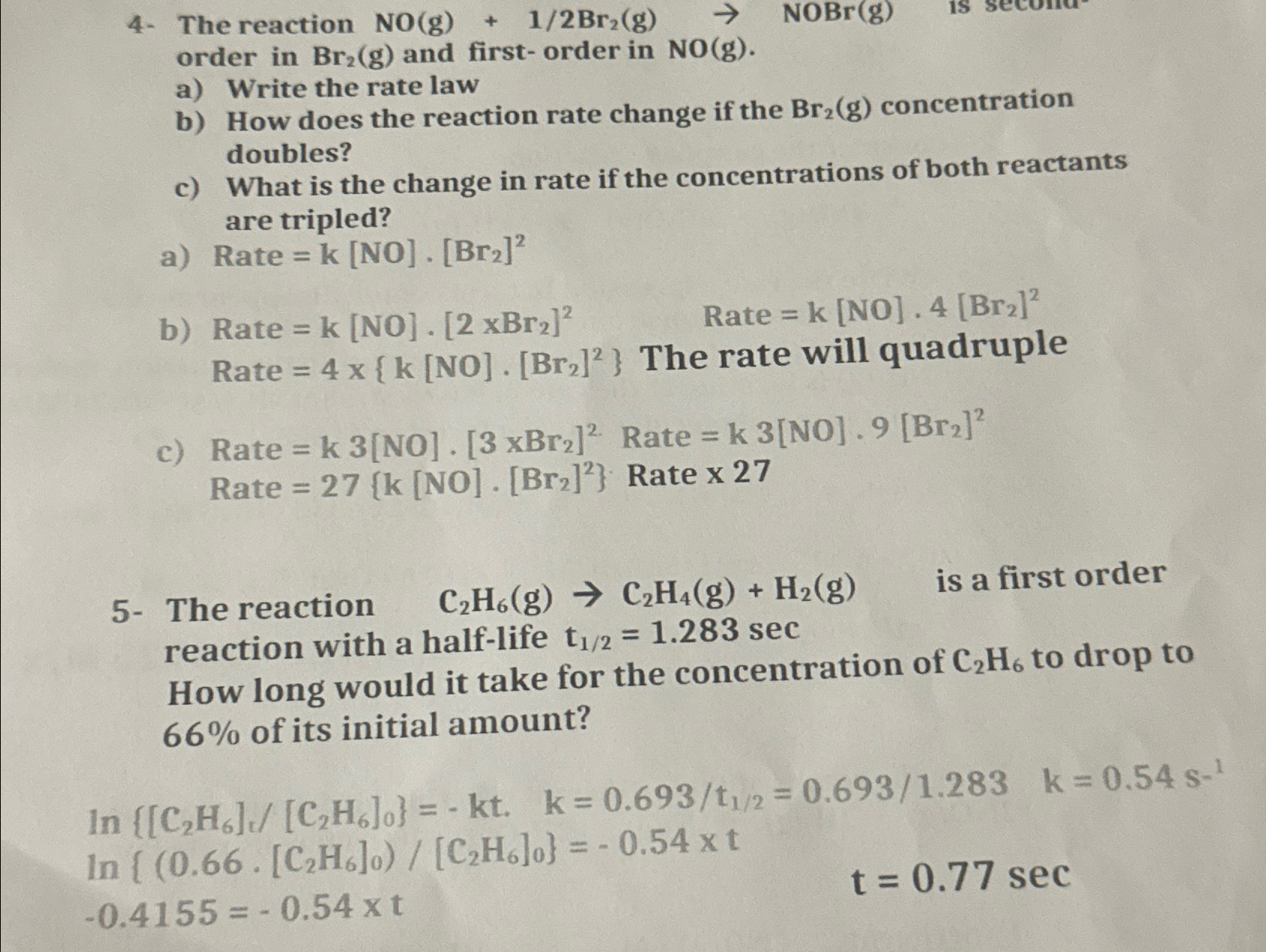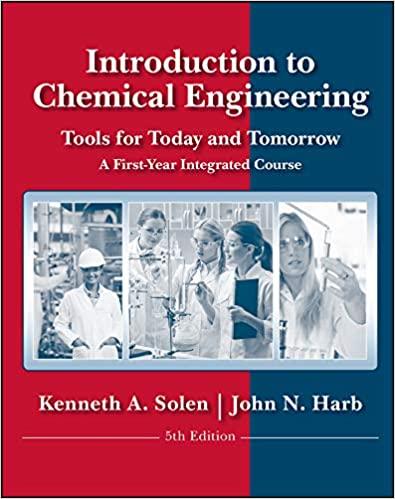Answered step by step
Verified Expert Solution
Question
1 Approved Answer
4- The reaction NO(g)+(1)/(2)Br_(2)(g)->NOBr(g) order in Br_(2)(g) and first-order in NO(g) . a) Write the rate law b) How does the reaction rate change if
4- The reaction
NO(g)+(1)/(2)Br_(2)(g)->NOBr(g)order in
Br_(2)(g)and first-order in
NO(g).\ a) Write the rate law\ b) How does the reaction rate change if the
Br_(2)(g)concentration doubles?\ c) What is the change in rate if the concentrations of both reactants are tripled?\ a) Rate
=k[NO]*[Br_(2)]^(2)\ b) Rate
=k[NO]*[2xBr_(2)]^(2),Rate
=k[NO]*4[Br_(2)]^(2)\ Rate
=4\\\\times {k[NO]*[Br_(2)]^(2)}The rate will quadruple\ c) Rate
=k3[NO]*[3xBr_(2)]^(2)Rate
=k3[NO]*9[Br_(2)]^(2)\ Rate
=27{k[NO]*[Br_(2)]^(2)}*Rate
\\\\times 27\ 5- The reaction
C_(2)H_(6)(g)->C_(2)H_(4)(g)+H_(2)(g),is a first order reaction with a half-life
t_((1)/(2))=1.283secHow long would it take for the concentration of
C_(2)H_(6)to drop to
66%of its initial amount?\
In {([C_(2)H_(6)]_(c))/([C_(2)H_(6)]_(0))}=-kt.,k=(0.693)/(t_((1)/(2)))=(0.693)/(1.283)k=0.54s^(-1)\ ln{(0.66*[C_(2)H_(6)]_(0))/([C_(2)H_(6)]_(0))}=-0.54\\\\times t\ -0.4155=-0.54\\\\times t\ t=0.77sec\
t=0.77sec 
Step by Step Solution
There are 3 Steps involved in it
Step: 1

Get Instant Access to Expert-Tailored Solutions
See step-by-step solutions with expert insights and AI powered tools for academic success
Step: 2

Step: 3

Ace Your Homework with AI
Get the answers you need in no time with our AI-driven, step-by-step assistance
Get Started


